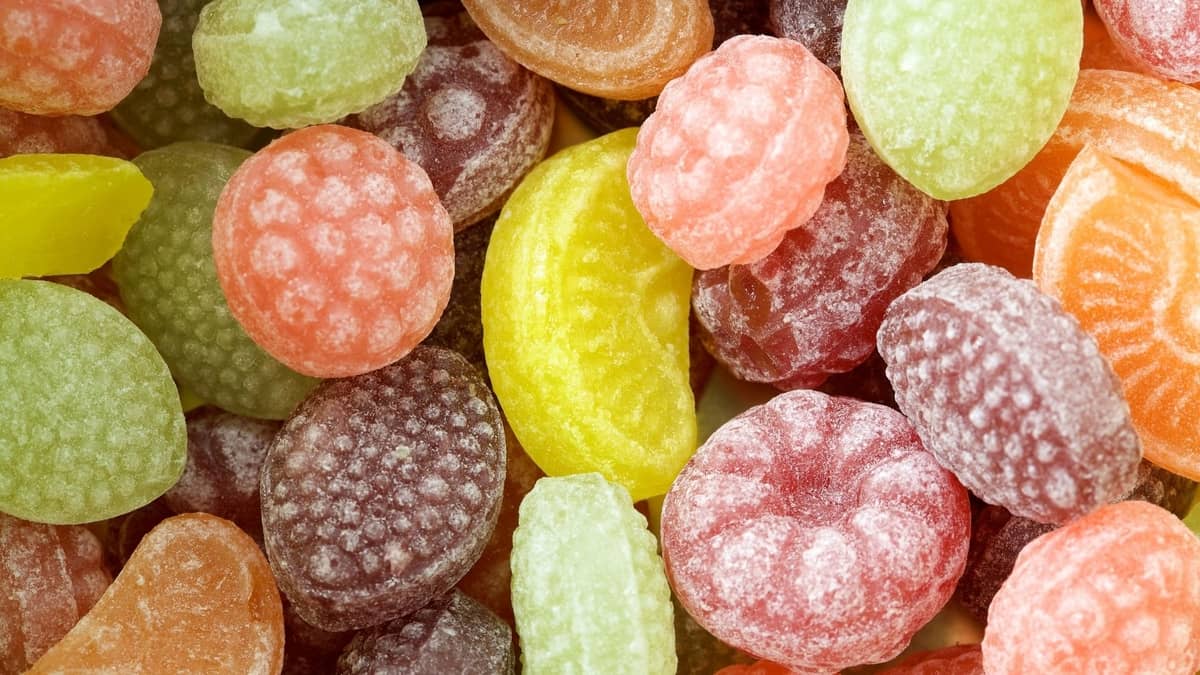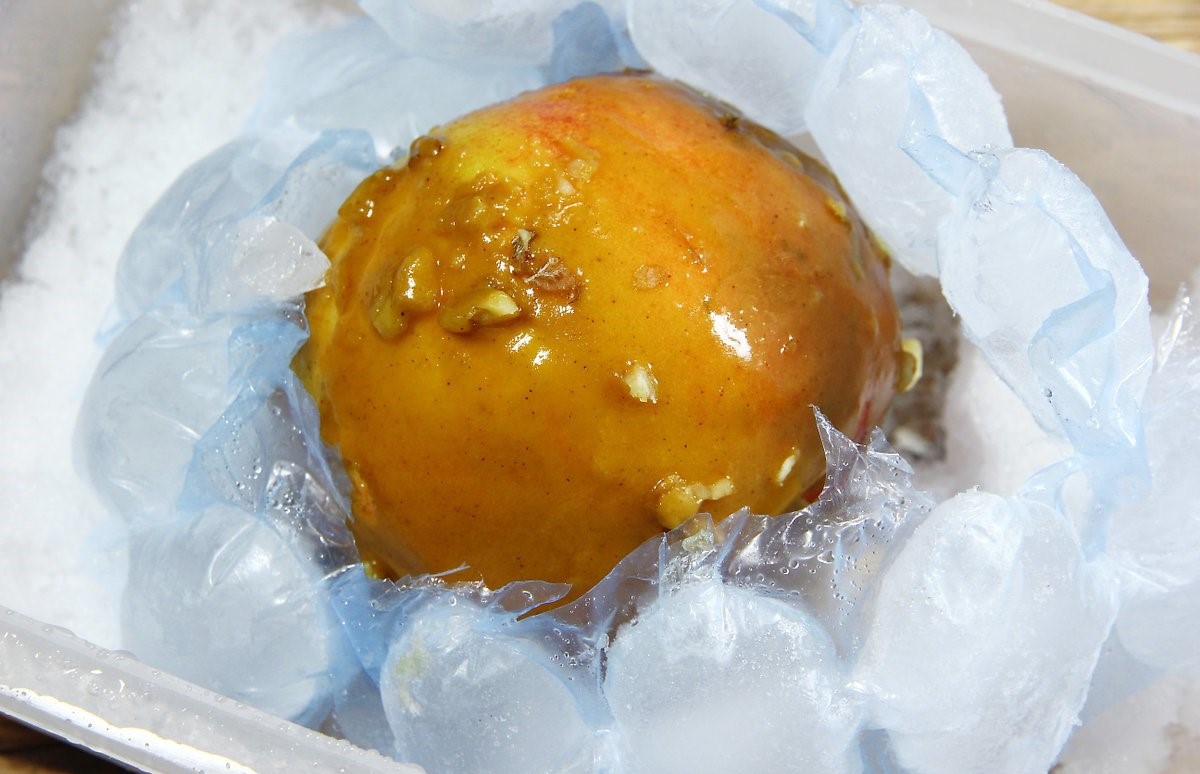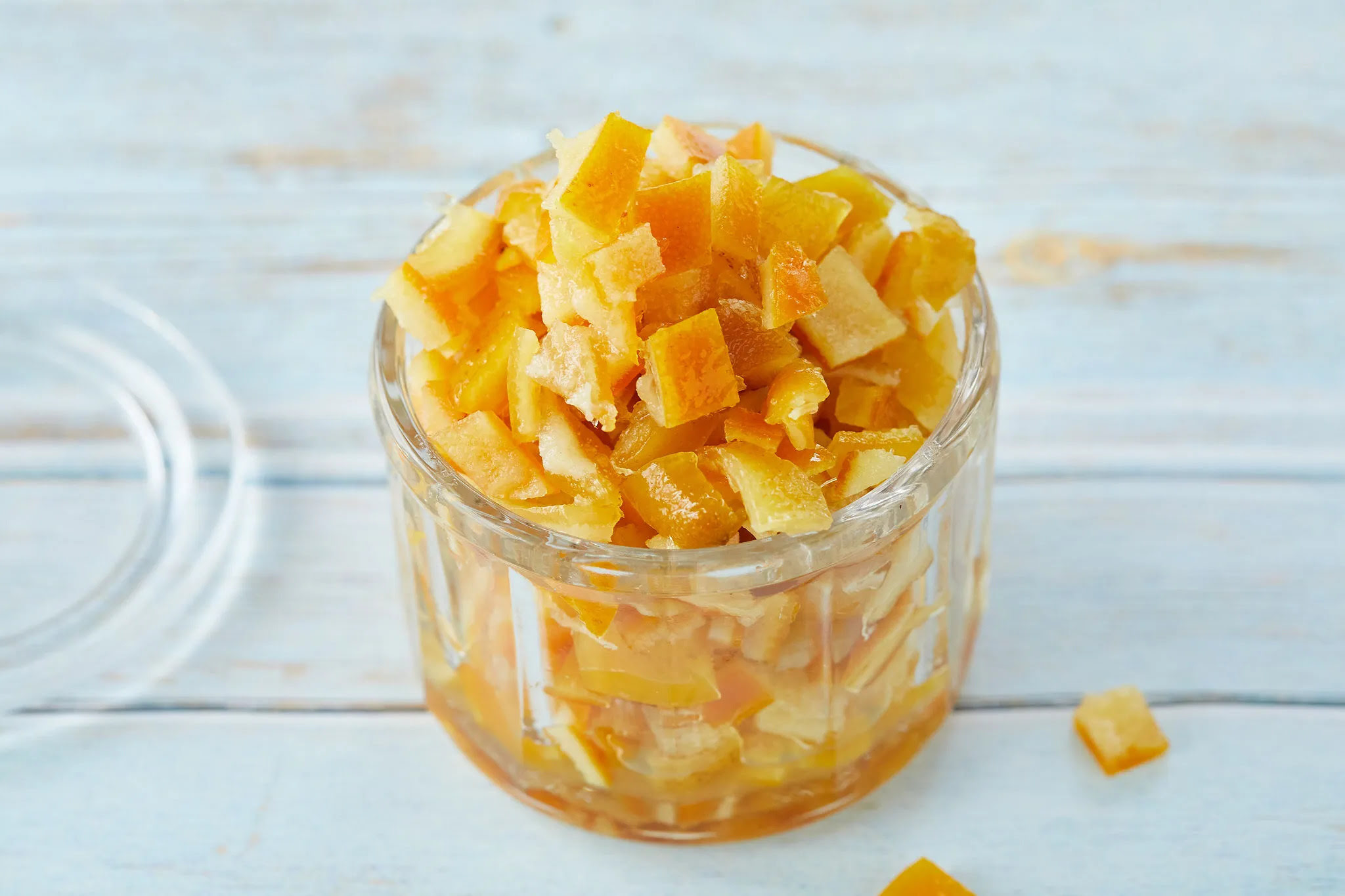

Articles
How To Store Hard Candy Long Term
Modified: December 7, 2023
Looking for tips on storing hard candy long term? Check out our comprehensive articles for expert advice and guidance.
(Many of the links in this article redirect to a specific reviewed product. Your purchase of these products through affiliate links helps to generate commission for Storables.com, at no extra cost. Learn more)
Introduction
Hard candy is a beloved treat that brings joy to people of all ages. Its satisfying crunch and delicious flavors make it a popular choice for snacking or as a sweet gift. However, if you find yourself with a surplus of hard candy or want to stock up for a special occasion, you may be wondering how to store it for the long term. Properly storing hard candy is essential to maintain its flavor, texture, and quality.
In this article, we will explore the best practices for storing hard candy to help you keep it fresh and enjoyable for an extended period. From proper packaging to temperature and humidity considerations, we will guide you through the steps needed to preserve your hard candy’s taste and appearance. So let’s dive in and discover how to store hard candy long term!
Key Takeaways:
- Properly storing hard candy for the long term involves individual wrapping, airtight containers, and temperature control to maintain flavor and texture.
- Utilizing desiccants, monitoring for spoilage, and following best practices can help extend the shelf life of hard candy for prolonged enjoyment.
Read more: How To Store Hard Candy
Proper Packaging for Long-Term Storage
When it comes to storing hard candy for an extended period, proper packaging is crucial. The right packaging will help protect the candy from moisture, air, and light, which can cause it to become sticky, stale, or lose its vibrant colors. Here are some essential packaging tips:
- Wrap each candy individually: Individually wrapping each hard candy in airtight packaging, such as plastic wrap or food-grade cellophane, helps prevent them from sticking together and minimizes exposure to air and moisture.
- Place wrapped candies in a resealable container: After individually wrapping the candies, place them in a resealable container to provide an extra layer of protection. This can be airtight plastic bags, glass jars with tight-fitting lids, or food storage containers specifically designed for long-term storage.
- Add padding: To prevent the candies from clumping or getting damaged, consider adding a layer of padding between the wrapped candies. You can use parchment paper, bubble wrap, or even cotton balls as a cushioning layer.
- Label and date the containers: It’s essential to label your storage containers with the type of candy and the date you packed them. This will help you keep track of their freshness and enjoy them before they lose their optimal quality.
By following these packaging guidelines, you can significantly extend the shelf life of your hard candy and ensure that it retains its delicious flavor and texture over time.
Choosing the Right Storage Container
Selecting the appropriate storage container for your hard candy is vital to keep it fresh and avoid any potential damage. The right container will shield the candy from moisture, air, and light, while also being convenient to use. Here are some factors to consider when choosing a storage container:
- Airtightness: Opt for containers that offer airtight seals to prevent air and moisture from seeping in. This will help maintain the candy’s texture and prevent it from becoming sticky or absorbing unwanted odors.
- Material: Consider using glass or BPA-free plastic containers with tight-fitting lids. These materials are durable and non-reactive, ensuring that the candy’s quality remains intact.
- Size: Choose a container that accommodates your hard candies without excessive empty space. This will minimize the chances of candies shifting and reduce the potential for breakage or damage.
- Visibility: Opt for translucent or clear containers so that you can easily see the contents without having to open them. This helps you monitor the condition of the candy and prevents unnecessary exposure.
- Stackability: If you plan to store large quantities of hard candy, look for containers that are stackable. This will save space and make it more convenient to organize and access your collection.
Remember to thoroughly clean and dry your storage containers before adding the hard candy to ensure that no residual odors or moisture interfere with its quality. Additionally, consider storing the containers in a cool, dry, and dark place to maintain optimal shelf life for the candy.
By choosing the right storage container, you can safeguard your hard candy from external factors that may compromise its freshness and overall appeal.
Temperature and Humidity Considerations
Temperature and humidity play a significant role in the storage of hard candy. Extreme temperatures and high humidity can adversely affect the candy’s texture, flavor, and shelf life. Here are some essential considerations to keep in mind:
- Avoid high temperatures: Hard candy should be stored in a cool environment to prevent melting or becoming overly soft. Heat can cause the candy to lose its shape, stick together, or even become inedible. Aim to store the candy in an area with temperatures below 75°F (24°C).
- Steer clear of moisture: Excessive humidity can lead to the hard candy absorbing moisture from the air, resulting in a sticky consistency or even the formation of syrupy pockets. Store the candy in a dry environment and avoid areas prone to humidity, such as near windows, kitchen sinks, or bathrooms.
- Consistent environment: Fluctuating temperatures and humidity levels can accelerate the degradation of hard candy. Aim for a stable environment to ensure the candy maintains its integrity. Avoid storing the candy near appliances or areas that experience temperature variations, like heating vents or direct sunlight.
- Consider a climate-controlled space: If you live in an area with extreme climate conditions, such as high humidity or hot summers, it may be beneficial to store your hard candy in a climate-controlled space. This could be a temperature and humidity-regulated pantry, cellar, or even a dedicated storage room.
By taking these temperature and humidity considerations into account, you can help preserve the texture, flavor, and overall quality of your hard candy for an extended period.
Avoiding Exposure to Light
When storing hard candy for the long term, it’s important to protect it from exposure to light. Light, especially direct sunlight and UV rays, can cause the candy’s colors to fade and affect its overall quality. Here are some tips to avoid light exposure:
- Choose opaque containers: Opt for storage containers that are opaque or tinted to block out light. This will help preserve the candy’s vibrant colors and prevent them from fading over time.
- Store in a dark area: Find a storage location that is away from windows or any other source of direct sunlight. Sunlight can accelerate the degradation process, causing the candy to lose its appeal and potentially affecting its taste.
- Consider a dark pantry or cupboard: If possible, store your hard candy in a dark pantry or cupboard. This will provide an extra layer of protection against light exposure and maintain the candy’s visual appeal.
- Use light-blocking materials: If you are unable to find opaque storage containers, you can wrap the candy in aluminum foil or place it in a light-blocking bag before placing it in the storage container. This will help minimize light penetration and maintain the candy’s quality.
By preventing exposure to light, you can ensure that your hard candy stays visually appealing and retains its original colors throughout its extended storage period.
Store hard candy long term in an airtight container in a cool, dry place away from direct sunlight. Avoid storing it in the refrigerator or freezer, as moisture can cause the candy to become sticky.
Read more: How To Store Hard Drives Long Term
Freezing Hard Candy
Freezing hard candy can be a viable option for long-term storage, especially if you want to extend its shelf life beyond what is achievable at room temperature. Freezing can help maintain the candy’s freshness, texture, and flavor. Here are some important considerations when freezing hard candy:
- Wrap the candy tightly: Before freezing, make sure to wrap each piece of hard candy individually with plastic wrap or place them in airtight freezer bags. This will prevent moisture from getting in and freezer burn from affecting the candy.
- Choose airtight containers: If you prefer to store multiple wrapped hard candies together, consider using airtight containers or freezer-safe bags to prevent any odor transfer or moisture absorption.
- Label and date: It’s crucial to label the containers or bags with the type of candy and the date of freezing. This will help you keep track of how long the candy has been stored in the freezer and ensure you consume it before any potential quality deterioration.
- Thawing the candy: When you are ready to enjoy the frozen hard candy, allow it to thaw at room temperature. Avoid sudden temperature changes, as it can cause condensation on the candy’s surface and impact its texture.
- Eat within recommended timeframe: While freezing can help prolong the shelf life of hard candy, it’s important to note that it may not be as enjoyable after an extended period. It is recommended to consume the frozen hard candy within 6-12 months for the best taste and quality.
Freezing hard candy is a convenient option for long-term storage, but it is essential to follow proper wrapping and storage procedures to maintain its taste and texture. By taking these steps, you can enjoy your favorite hard candy even after an extended period of freezer storage.
Using Desiccants for Moisture Control
Moisture is one of the biggest enemies when it comes to storing hard candy. Excess moisture can lead to stickiness, loss of texture, and decreased shelf life. To combat moisture and maintain the quality of your hard candy during long-term storage, you can utilize desiccants. Desiccants are substances that help absorb and control moisture levels in the surrounding environment. Here’s how you can use desiccants for moisture control:
- Select appropriate desiccants: There are various types of desiccants available, such as silica gel packets, activated charcoal, or even rice grains. Choose desiccants that are food-safe and suitable for your specific storage conditions.
- Place desiccants in the storage container: Before storing your wrapped hard candies, add one or two desiccant packets or a small dish of desiccant material into the container. Make sure the desiccant is placed away from direct contact with the candies to prevent any transfer of flavor or texture.
- Monitor and replace desiccants periodically: Over time, desiccants may reach their maximum moisture absorption capacity. Monitor them periodically and replace them as needed to ensure optimal moisture control. Follow the manufacturer’s guidelines for the recommended lifespan and effectiveness of the desiccants you are using.
- Seal the container properly: Along with using desiccants, it’s crucial to maintain an airtight seal on your storage container. This will help prevent any moisture from entering and compromising the quality of your hard candy.
By incorporating desiccants into your storage routine, you can effectively control moisture levels and prolong the shelf life of your hard candy, ensuring that it stays fresh, crunchy, and enjoyable for an extended period.
Monitoring and Inspecting Stored Hard Candy
To ensure that your stored hard candy remains in optimal condition, it is important to regularly monitor and inspect it. By doing so, you can catch any potential issues or signs of spoilage early on and take necessary actions. Here are some tips for monitoring and inspecting your stored hard candy:
- Regular visual checks: Take a look at the stored hard candy periodically to visually inspect its appearance. Look for any signs of mold, discoloration, or unusual texture. If you notice any abnormalities, it may be an indication of spoilage, and the candy should be discarded.
- Check for moisture: Gently touch and feel the candy to ensure it is not overly sticky or moist. Excessive moisture can be a sign of improper storage conditions or compromised packaging. If the candy feels too moist, it may have absorbed moisture and could be at risk of spoilage.
- Assess flavor and texture: Taste the candy periodically to assess its flavor and texture. Hard candy should have a pleasant taste and maintain its characteristic crunchiness. If you detect any off-flavors or notice a change in texture, it may be an indication of degradation, and the candy should be discarded.
- Check for pest infestation: Keep an eye out for any signs of pests, such as ants, bugs, or rodents, in the storage area. These critters can contaminate the candy and render it inedible. If you suspect pest infestation, remove the affected candy and take necessary measures to eliminate the pests.
- Document storage conditions: Keep a record of the storage conditions, including temperature, humidity levels, and the date of storage. This helps you track any potential correlations between storage conditions and the candy’s quality over time.
By regularly monitoring and inspecting your stored hard candy, you can identify any issues early on and take appropriate action. This will help ensure that you consume the candy while it is still fresh, flavorful, and safe to enjoy.
Best Practices for Prolonging Shelf Life
If you want to extend the shelf life of your hard candy and keep it fresh and enjoyable for as long as possible, follow these best practices:
- Proper packaging: As mentioned earlier, individually wrap each piece of hard candy in airtight packaging and place them in a resealable container. This helps prevent moisture, air, and light from negatively impacting the candy.
- Store in a cool and dry place: Maintain an optimal storage environment by storing the candy in a cool area with temperatures below 75°F (24°C) and low humidity. Avoid locations near heat sources or areas prone to temperature fluctuations.
- Avoid exposure to light: Protect the candy from direct sunlight and UV rays by storing it in opaque or tinted containers or wrapping it in light-blocking materials like aluminum foil.
- Keep away from strong odors: Hard candy can absorb strong odors, which can affect its flavor and overall quality. Store it away from pungent substances or strong-smelling foods to preserve its taste.
- Use desiccants: Include desiccants, such as silica gel packets or activated charcoal, to control moisture levels and prevent the candy from becoming sticky or prone to mold growth.
- Regularly inspect and monitor: Keep an eye on the candy’s appearance, texture, flavor, and any signs of spoilage. Conduct periodic checks to ensure it is in good condition and discard any candies that show signs of degradation.
- Rotate your stock: If you have a large quantity of hard candy, use the “first in, first out” principle. Consume the older candies first and replenish your stock with fresh ones. This helps ensure that you always have the freshest candy available.
- Follow recommended storage guidelines: Different types of hard candy may have specific storage requirements. Always refer to the manufacturer’s instructions or recommendations for storing the specific type of candy you have to maximize its shelf life.
By following these best practices, you can prolong the shelf life of your hard candy and enjoy it in excellent condition for an extended period. Remember to regularly check and maintain the storage conditions to ensure the candy retains its flavor and quality.
Read more: How To Store Candy
Conclusion
Properly storing hard candy for the long term is essential to maintain its flavor, texture, and quality. By following the best practices and guidelines outlined in this article, you can ensure that your hard candy stays fresh, delicious, and enjoyable for an extended period.
From proper packaging to temperature and humidity control, each step plays a crucial role in preserving the candy’s integrity. Individually wrapping each candy and placing them in airtight containers helps prevent stickiness and exposure to air and moisture. Choosing the right storage containers that are airtight, opaque, and stackable further safeguards the candy from light and humidity.
Temperature and humidity considerations are crucial factors to keep in mind when storing hard candy. Avoiding high temperatures and excessive moisture prevents melting, texture changes, and spoilage. Additionally, protecting the candy from exposure to light helps preserve its vibrant colors and overall quality.
If you choose to freeze your hard candy, ensure individual wrapping and proper thawing to maintain its taste and texture. Using desiccants can aid in moisture control, while regular monitoring and inspection help catch any potential issues early on. Finally, following recommended storage guidelines, rotating your stock, and being mindful of strong odors can further prolong the shelf life of your hard candy.
By incorporating these practices into your storing routine and keeping a keen eye on the candy’s condition, you can savor your favorite hard candy at its best long after its initial purchase or creation.
So, whether you’re stocking up on hard candy for future snacking or preserving it as a sweet gift, implementing these storage techniques will ensure that your hard candy remains fresh, flavorful, and a delightful treat for every occasion.
Frequently Asked Questions about How To Store Hard Candy Long Term
Was this page helpful?
At Storables.com, we guarantee accurate and reliable information. Our content, validated by Expert Board Contributors, is crafted following stringent Editorial Policies. We're committed to providing you with well-researched, expert-backed insights for all your informational needs.














0 thoughts on “How To Store Hard Candy Long Term”